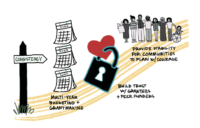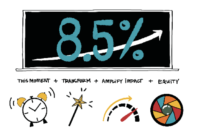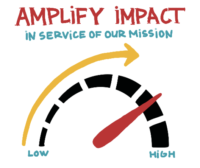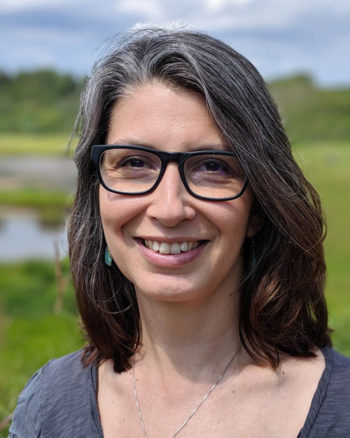As I read “What’s Not Changing (Much) in Funder Practice: Multiyear GOS” on the Center for Effective Philanthropy (CEP) blog, I found the advice for foundations considering multiyear general operating support (GOS) really resonated with our experience at the Sewall Foundation. Specifically, “align[ing] foundation processes, systems, and culture to encourage more multiyear GOS grantmaking” is at the core of many shifts and explorations that we have and continue to undertake. In December 2021, the Sewall Foundation board of directors approved our first multiyear budget, which includes three years of approved grants budget, while our operations budget is brought to our board each year.

Why a Multiyear Budget?
While the Sewall Foundation has provided both multiyear and GOS grants for some time, we felt that to be fully transparent with our grantees, we always had to add the caveat of “depending on board-approval of next year’s budget.” While our board has been supportive of multiyear funding, we knew that saying “trust us” to grantees and the communities we serve when it comes to funding was not a power-aware position to take. Understanding that multiyear and GOS are key best practices in philanthropy, and cornerstones in equity-focused and trust-based philanthropy — and that they “provide nonprofit organizations with stability and position them to grow their impact by enabling nonprofits to plan, to flexibly use resources where they are most needed, and to do the long-term work of addressing systemic and complex social issues,” as described by Naomi Orensten in the above-mentioned CEP blog post — meant that we needed to create internal structures and processes that could sustainably harness these practices.

Thus, the primary drivers for the creation of a multiyear budget were to:
- Create the necessary internal structural and process changes needed to increase general operating support (GOS) and multiyear grants;
- Allow a greater degree of transparency, consistency, and planning for our grantees, the communities we serve, and ourselves; and
- Become better partners to the organizations working in and with the communities we strive to serve by walking the talk of trust-based philanthropy.
We developed the multiyear budget by starting with our mission, values, and our board’s equity principles; bringing in what we’ve heard from grantees, communities, and peer funders; informing our work through philanthropic and nonprofit literature about trends and opportunities at the local, national, and global level; and careful consideration of what this moment means for Maine’s people, animals, and natural environments.
Not only did our board approve a 3-year grants budget for the foundation, they also approved an amplified funding level of 8.5% for those three years. This amplified funding level was set in recognition of the critical nature of this moment in recovering from the pandemic and investing in transformational efforts so that we don’t go back to pre-pandemic “normal,” but rather work with our grantees, peer funders, and community leaders to help create more equitable, more humane, and more collaborative ecosystems.

A necessary part of these internal changes has been working to be explicit about the assumptions and beliefs underlying our decisions and actions. In creating our multiyear budget, some of those assumptions and beliefs include:
- An organization’s budget is its central and most powerful policy tool, and as such should manifest and tell the story of our mission, values, and vision.
- As a foundation, we hold a position of privilege in Maine, and in the world, and therefore have a heightened responsibility to use this privilege for good, for justice, and to advance our mission.
- This moment in time (following the COVID 19 pandemic and amidst heightened calls for racial justice and climate action) requires that we take decisive, bold, and loving action to, at minimum, mitigate the worst of the harm already affecting the communities we serve, and at best, contribute to a transformation of our systems that could herald a new way of being in relationship with each other.

- Given the growth of our endowment during the pandemic (a perverse logic of the stock market that made the wealthy wealthier during a time of global suffering), our board believes in the importance of sharing that wealth as a matter of equity and solidarity.
- Our board-adopted equity principles, which guide all our work, acknowledge that we live in a world created by the past, and so our budget must acknowledge and address the harms caused by a too long history of structural systems of oppression and invest in efforts to repair harm in partnership with communities.
- After 2 years of crisis response and triage mode, we believe there is a window of opportunity for transformation by supporting new ways of being and partnering with grantees to leverage federal funds and other resources available in the coming years.
- To bring our values into action, we need a full set of tools, so the multiyear budget includes multiple strategies (grantmaking, policy work, relationship building, communications, convening and capacity building, values-aligned investing, learning and evaluation, governance and board leadership) to amplify our impact by mutually reinforcing each other and addressing gaps and unmet needs.

Changing Our Internal Structures and Processes to Manifest Our Values
This is the first year of our multiyear budget, so we will have much to learn, and adapt, in the years to come. For Sewall, the multiyear budget is part of a broader set of changes we have put into place over the years as we work to deepen our active commitment to equity, our values, and to creating internal structures, processes, and an organizational culture that produce trust-based philanthropic practices as the default, not the exception.![]() This work is not easy, and it is often messy and invites discomfort. Changing philanthropic practices — and our internal processes, structures, and cultures — is inescapable if our sector is truly committed to equity, justice, and advancing our various missions. As a sector, we must commit to translating our values into action and recognize that lack of action also speaks loudly to our implicit values and assumptions.
This work is not easy, and it is often messy and invites discomfort. Changing philanthropic practices — and our internal processes, structures, and cultures — is inescapable if our sector is truly committed to equity, justice, and advancing our various missions. As a sector, we must commit to translating our values into action and recognize that lack of action also speaks loudly to our implicit values and assumptions.![]()
The lack of accountability of the philanthropic sector means we must work through peer accountability to make these changes happen and sustain them. I reshare CEP’s recent resources for peer guidance (and pressure!) to meaningfully move on these philanthropic practices — Making it Happen: A Conversation Guide and Making the Case: Foundation Leaders on the Importance of Multiyear General Operating Support — and challenge us all in the philanthropic sector to put our values into action. Anything less is simply not good enough.
Gabriela Alcalde is executive director at the Elmina B. Sewall Foundation. Find her and the Elmina B. Sewall Foundation on LinkedIn.
Graphics by Laura Dover, information and design manager at the Elmina B. Sewall Foundation.




